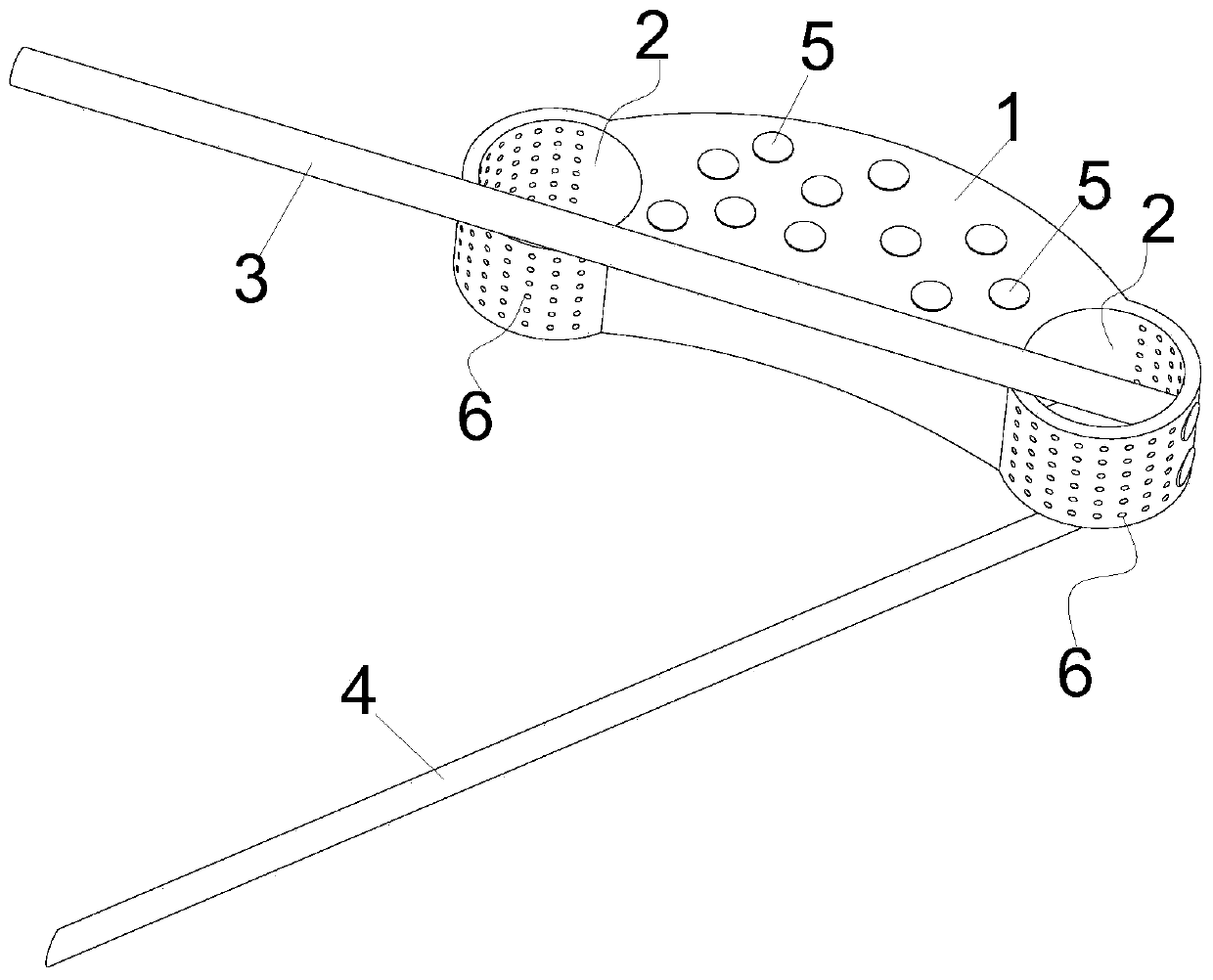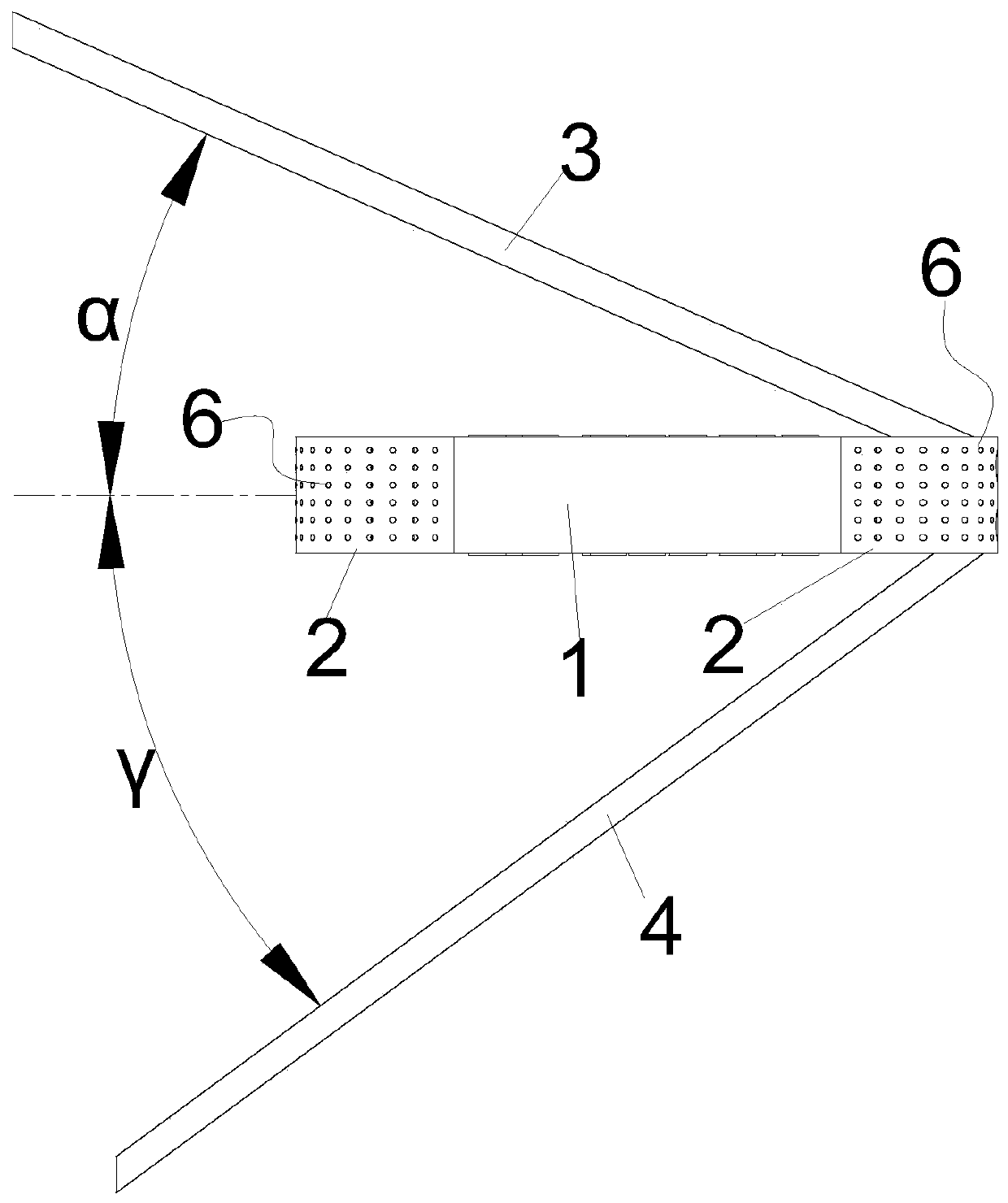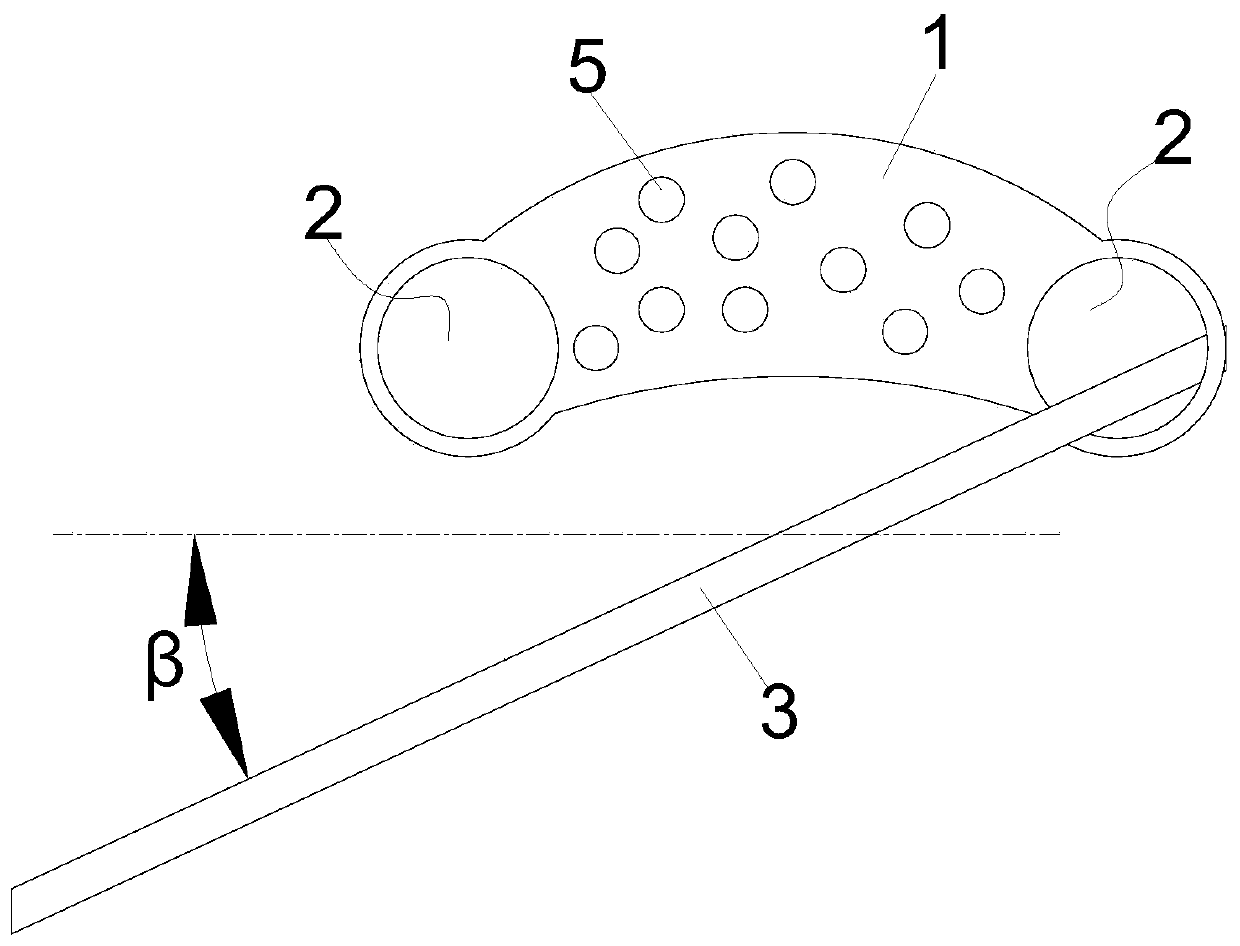Cervical vertebra anterolateral approach double-cortical fixed hook vertebral joint fusion cage
A fusion device and fixation hook technology, applied in spinal implants, medical science, prostheses, etc., can solve problems such as uncomfortable cervical spine side front surgical approach, unstable fixation, etc.
- Summary
- Abstract
- Description
- Claims
- Application Information
AI Technical Summary
Problems solved by technology
Method used
Image
Examples
Embodiment 1
[0033] This embodiment provides a double-cortical fixation hook-vertebral arthrodesis with cervical lateral-anterior approach, which is used to implant bone graft material into the intervertebral space of the patient from the lateral-anterior approach of the cervical vertebra and support the intervertebral space.
[0034] The double cortex fixation hook vertebra arthrodesis of cervical spine lateral anterior approach comprises fusion device body 1, and this fusion device body 1 is elongated block structure, and the adopting anatomical design of this fusion device body 1, makes it It fits better with the endplates on the upper and lower sides of the intervertebral space, so that the fusion device body 1 can be better supported between the upper and lower sides of the intervertebral space, and this shape of the fusion device body 1 can be applied from It is implanted through the frontal approach of the cervical spine, so that the trachea and esophagus do not need to be pulled dur...
Embodiment 2
[0041] As a best implementation mode of this embodiment, in this embodiment, the above-mentioned fixing structure includes a first hole, a first fastener, a second hole and a second fastener, and the above-mentioned first hole is a straight hole and has a On the upper part of the bone graft cavity 2, and the first hole faces upward and forward and slopes toward the other bone graft cavity 2 side, the above-mentioned first fastener is inserted in the first hole and guided through the first hole. It is pierced and fixed sequentially on the endplate cortex, cancellous bone, and lateral cortex of a vertebra above the intervertebral space. The above-mentioned second hole is also a straight hole and opened at the lower part of the bone graft cavity 2, and the second hole faces forward. Downward and inclined towards the other side of the bone graft cavity 2, the above-mentioned second fastener is inserted into the second hole and guided through the second hole to sequentially pass thr...
Embodiment 3
[0045] This embodiment is a best implementation mode of Embodiment 2. In this embodiment, the angle between the orthographic projection of the above-mentioned first screw 3 in the coronal plane and the horizontal line is defined as α, wherein 10°≤α≤45 °, and the angle between the orthographic projection of the first screw 3 in the transverse plane and the line connecting the left and right transverse process holes in the intervertebral space is β, 0≤β≤30°. In this way, the first screw 3 can be fixed on the endplate cortex, cancellous bone, and side cortex of a vertebra above the intervertebral space, and the first screw 3 can also perfectly avoid the carotid artery and not It will be accidentally inserted into the bone marrow located at the back of the vertebrae to ensure the safety of the double cortical fixed hook vertebral joint fusion device in the frontal approach of the cervical spine.
[0046] More preferably, the angle between the orthographic projection of the first s...
PUM
 Login to View More
Login to View More Abstract
Description
Claims
Application Information
 Login to View More
Login to View More - R&D
- Intellectual Property
- Life Sciences
- Materials
- Tech Scout
- Unparalleled Data Quality
- Higher Quality Content
- 60% Fewer Hallucinations
Browse by: Latest US Patents, China's latest patents, Technical Efficacy Thesaurus, Application Domain, Technology Topic, Popular Technical Reports.
© 2025 PatSnap. All rights reserved.Legal|Privacy policy|Modern Slavery Act Transparency Statement|Sitemap|About US| Contact US: help@patsnap.com



